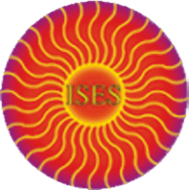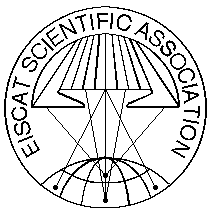
November 28 - December 02, 2011 - Namur, Belgium
Posters session 5
Innovations in Space Weather Services and Applications
| Session: | Posters Session 5 (14) |
| Type: | |
| Date: | Friday, December 02, 2011 |
| Time: | 10:30 - 11:15 |
| Chair: | Matthew Angling & Eva Robbrecht |
| Co-chair: | |
| Remarks: |
| Seq | Time | Title | Abs No | ||||
| 1 | 00:00 |
SuperMAG: The Global Ground Magnetometer Initiative
Gjerloev, Jesper1; Ohtani, Shin2 1University of Bergen, NORWAY; 2JHU-APL, UNITED STATES For decades ground based magnetometers have proven to be the workhorse of magnetosphere-ionosphere physics and their importance is indisputable. The data set provided by the ground magnetometer community is truly unique since it provide continuous and nearly global measurement of a fundamental parameter - the ground level magnetic field perturbations. The SuperMAG initiative (Gjerloev, 2009) provide a fully operational solution to these complications. This is a worldwide collaboration of organizations and national agencies that currently operate more than 300 ground based magnetometers. SuperMAG provides easy access to validated ground magnetic field perturbations in the same coordinate system, identical time resolution and with a common baseline removal approach. The purpose of SuperMAG it to help scientists, teachers, students and the general public have easy access to measurements of the Earth's magnetic field. In addition to a presentation of the initiative itself we discuss results from published studies enabled by SuperMAG. |
|||||
| 2 | 00:00 |
Updated Medium-Term Sunspot Number Prediction Service using Kalman Filter
Podladchikova, Tatyana1; Van der Linden, Ronald2 1Institute for Applied System Analysis, NTUU “KPI”, Solar-Terrestrial Center of Excellence, ROB, UKRAINE; 2Solar-Terrestrial Center of Excellence, ROB, BELGIUM
In this work we present a service implemented at the Solar-Terrestrial Center of Excellence, ROB, Belgium, providing improved medium-term predictions of monthly smoothed sunspot numbers using a Kalman filter technique. The improvement of the predictions is provided by applying an adaptive Kalman filter to the medium-term predictions obtained by any other method, using the six monthly mean values of sunspot numbers covering the six months between the last available value of the 13-month running mean (the starting point for the predictions) and the 'current time' (i.e. now). The technique first of all provides an effective estimate of the sunspot index at the current time. This estimate becomes the new starting point for the updated prediction that is shifted six months ahead in comparison with the last available 13-month running mean and provides an increase of prediction accuracy. Our technique has been tested on three medium-term prediction methods that are currently in real-time operation: The McNish-Lincoln method (NGDC), the standard method (SIDC) and the combined method (SIDC). With our technique, the prediction accuracy for the McNish-Lincoln method (M&L) is increased by 17-30%, for the standard method (SM) by 5-21% and for the combined method (CM) by 6-57%. Monthly reports of the improved sunspot number predictions on the basis of this Kalman filter are published by the SIDC at http://sidc.oma.be/products/kalfil/. |
|||||
| 3 | 00:00 |
ODI - A Database System for Space physics Data and Metadata
Wintoft, Peter1; Heynderickx, Daniel2; Eliasson, Lars1; Evans, Hugh3 1Swedish Institute of Space Physics, SWEDEN; 2DH Consultancy, BELGIUM; 3ESA/ESTEC, NETHERLANDS The Open Data Interface (ODI) is a database system for storing space environment data and metadata using MySQL. The system is compliant with the CDF/ISTP and COSPAR/PRBEM Guidelines. Currently there are more than 100 datasets in the database such as IMP8/GME, SREM, XMM/ERMD, GOES particle and radiation data, and indices such as Dst, Kp, and SSN. Adding new datasets is straightforward and includes the editing of a CDF-style skeleton file to describe the metadata. If the raw data to be ingested are CDF files these are automatically converted before the data are stored into ODI. For non-CDF files, like plain text files, a few lines of code need to be edited to correctly parse the raw data files. As ODI is based on MySQL it is accessible to a large range of different software platforms. As part of the development, interfaces to IDL, PHP, Python, Matlab and Java have been developed, but the ODBC interface also can provide direct access from many other programs. Interfaces to existing platforms can therefore be set up and applications have been updated to connect to the ODI system like SAAPS, SEDAT, and SPENVIS. ODI is now at version 2 with major updates of the core system layout simplifying the addition of new datasets. |
|||||
| 4 | 00:00 |
The STAFF Viewer: easy Access to your Favorite Space Weather Time Series
Verbeeck, Cis; Callebaut, Benoit; Berghmans, David; Delouille, Veronique; Mampaey, Benjamin Royal Observatory of Belgium, BELGIUM The Solar Timelines Viewer for AFFECTS (STAFF) is a dynamical online tool that will provide a whole gamut of solar activity proxies. It is currently being developed at the Royal Observatory of Belgium (ROB) as part of the FP7 project AFFECTS (Advanced Forecast For Ensuring Communications Through Space), and will allow the user to easily plot and export any combination of proxies in a selected time interval. The viewer will serve near real time data as well as the full available archive of all of its proxies. It is built on a database of timeline parameters that define the solar activity, concentrating on those parameters with expected influence on ionospheric conditions. Next to classical parameters of solar activity such as the International Sunspot Number, 10.7 cm radio flux, and GOES X-ray curves, novel proxies extracted automatically from coronal EUV images (AIA, SWAP, EIT) will be provided. Examples are the total flux observed in the telescope passband, active region area, and total EUV intensity within active regions. We present the opportunities that this new tool will offer and show what has already been achieved. |
|||||
| 5 | 00:00 |
New Measurements of Magnetospheric Particle Fluxes, Densities and Temperatures on GOES 13-15
Rodriguez, Juan1; Green, Janet2; Onsager, Terry3; Singer, Howard3 1University of Colorado, UNITED STATES; 2NOAA National Geophysical Data Center, UNITED STATES; 3NOAA Space Weather Prediction Center, UNITED STATES The GOES 13-15 satellites of the U. S. National Oceanic and Atmospheric Administration (NOAA) carry new space weather instruments that extend the measured energy range of magnetospheric electron and proton fluxes down to 30 keV and 80 keV, respectively. These new instruments, the Magnetospheric Electron Detector (MAGED) and Magnetospheric Proton Detector (MAGPD), complement the measurements of solar energetic protons (>740 keV) and relativistic electrons (>800 keV) that also were available from GOES 8-12. GOES 13 was launched in 2006 and went operational in 2010. MAGED and MAGPD each consist of nine identical solid-state-detector telescopes looking in different directions that make measurements in five energy channels. Since December 2010, the NOAA Space Weather Prediction Center (SWPC) has produced dead-time-corrected, contamination-corrected and calibrated MAGED and MAGPD fluxes in real-time that are archived by the NOAA National Geophysical Data Center (NGDC). GOES 13-15 also carry three-axis fluxgate magnetometers, mounted on an 8.5-meter boom, that continue the accurate series of magnetic field vector measurements provided by GOES 8-12 and prior satellites. The vector magnetic field data are used to calculate the time-varying pitch angle of each MAGED and MAGPD telescope. Using the pitch angles and energy spectra, number densities and temperatures of the distribution parallel and perpendicular to the magnetic field are calculated over the measured energy ranges. Both the pitch-angle-resolved differential energy fluxes and the density and temperature products are designed with space weather user community needs in mind, such as geospace modeling and spacecraft charging. Plans for improving the quality of the data sets at NGDC using intercalibration and other techniques will be outlined. |
|||||
| 6 | 00:00 |
Geomagnetic Storm modeling by Means of Artificial Neural Network
Revallo, Miloš1; Valach, Fridrich2; Hejda, Pavel3; Bochníèek, Josef3 1Geophysical Institute of the Slovak Academy of Sciences, Bratislava, SLOVAKIA; 2Geomagnetic Observatory, Geophysical Institute of the Slovak Academy of Sciences, Hurbanovo, SLOVAKIA; 3Institute of Geophysics, Academy of Sciences of the Czech Republic, Prague, CZECH REPUBLIC We try to employ the method of artificial neural network (ANN) to model selected strong geomagnetic storms during the past solar cycle. The input of the ANN consists of the set of solar wind data obtained from the ACE satelite. The ANN is trained to provide the output in terms of Dst index. The focus is made on particular geomagnetic storms; their onset as well as their recovery phase. Simulated Dst index series is obtained from an empirical model of the solar wind magnetosphere interaction and is compared with real data. The question is how much past solar wind data is needed to obtain the most accurate one step ahead forecasts. The preliminary results show that the ANN can be helpful to resolve this question. |
|||||
| 7 | 00:00 |
Design and Materialization of Space Weather Effect Analysis Tool
Jeong, Cheol Oh1; Park, Jae Woo2; Kim, Jung Hoon3; Lee, Yong Min2 1ETRI, REPUBLIC OF KOREA; 2ETRI, KOREA, REPUBLIC OF; 3SETsystem Inc., KOREA, REPUBLIC OF
Electronics and Telecommunications Research Institute (ETRI) is performing the research on i°Space Environment Effects and Infra Protection Referencei±. Regarding to this, space weather effect analysis tool is now developing. This tool will be provided analysis environment which is needed to perform the effect analysis on space infrastructure as satellites on orbit and to derive statistical analysis model. This tool is going to consist of two modules. Those are information and data retrieval frame-work module and space infrastructure effect analysis module. Information and data retrieval frame-work module has a function of DB management system. So this module will be designed with data input block, DB block, query block and result output block. DB block is going to build with 4 kinds of data and information such as total 15 kinds of space weather measured data and space weather index, satellite anomaly data due to space weather, satellite orbit data, and published paper and report information related to space weather. Space infrastructure effect analysis module has a function to give query and output result per useri's request. According to query condition, this module can be modified data and information from DB and given result with new forms of text, graphics as well as excel sheet. For efficient tool operation, Graphic User Interface (GUI) will be adapted. And also networking function will be included for preparation of the development of simulator in future. This tool runs on PC based environment with dual core CPU, 8GB memory of HW platform, windows-7 OS, Python 2.6x development language, and MySQL DBMS. After completion of the effect analysis tool development, simulator for space weather effect prediction will be preceded in succession. Effect analysis tool which is core item of simulator development will give space weather measured data and relative index information, satellite operation status and anomaly DB needed as input data when simulation will perform. When completion of simulator development, it will be possible to predict the effect mode and level of GEO an LEO satellite through simulation tool and it will be expected to provide the necessary actions needed to protect and prevent the space infrastructure from solar explosive events. |
|||||
| 8 | 00:00 |
Evaluation of the EDDA Dst Forecasting Algorithm
Amata, E.; Pallocchia, G. inaf/ifsi, ITALY The performance of the EDDA Dst forecasting algorithm is evaluated over the last solar cycle and compared with that of other similar algorithms. We demonstrate that EDDA is particularly suited for the forecast of severe storms (Dst<-300 nT). A discussion on the quality of L1 data on which Dst forecasts depend is also presented. |
|||||
| 9 | 00:00 |
Ipode : Ionising Particle Onera Database for Earth's Radiation Belt Analysis
Lazaro, Didier; Bourdarie, Sébastien; Sicard-Piet, Angélica ONERA, FRANCE
Satellite engineers, operators, and radiation belt researchers share a common desire to understand and predict the structure and variability of Earth's radiation belts. In the radiation belt community, there is a need for improved scientific understanding of the radiation belts, more accurate dynamic and climatological models, space weather restitution and prediction and a mechanism for more efficient transfer of scientific understanding to the space community. To allow for such advancements to take place, IPSAT (Ionising Particle in Space Analysis Tool) has been developed at ONERA under CNES funding in the frame of the CRATERRE project. This web based virtual radiation belt observatory tool offers access to near-real-time measurements, historical data, analysis and visualization software.
This tool relies mainly on a current data base now known as IPODE (Ionising Particle Onera Database). This database is composed of nearly a hundred spacecraft/instrument couples for in-situ Earth’s particle measurements (electron, proton and alpha particles fluxes). A wide range of orbits are covered: geosynchronous (GEO), global positioning systems (GPS), elliptical (HEO) and low altitude (LEO). Measurements have been and are still gathered through open source data or collaborations between ONERA and international institutions such as Los Alamos National Laboratory (LANL), Aerospace Corporation, JAXA (CNES-JAXA agreement), Moscow State University (MSU) and CONAE (CNES-CONAE agreement). The principal strength of this data base is its global spatial and long time coverage. |
|||||
| 10 | 00:00 |
Solar Flare Forecasting: From Probabilities to targeted Predictions
Bloomfield, D. Shaun1; Higgins, Paul A.1; McAteer, R. T. James2; Gallagher, Peter T.1 1Trinity College Dublin, IRELAND; 2New Mexico State University, UNITED STATES Solar flares contribute to space weather through significant increases in UV and X-ray flux and the acceleration of energetic particles. To date, it is unclear how the probability of producing a flare of a given magnitude relates to the characteristics of a sunspot group. Here, we use GOES flares and McIntosh group classifications from solar cycles 21 and 22 to calculate average flare rates for each McIntosh class and use these to determine Poisson probabilities for different flare magnitudes. Forecast verification measures are studied to find optimum thresholds to convert Poisson flare probabilities into yes/no predictions of cycle 23 flares. A case is made to adopt the sample-invariant true skill statistic (TSS) as a standard for forecast comparison over the commonly used sample-dependent Heidke skill score (HSS). In addition, a framework for tailoring forecasts to various space weather interest groups is presented. The optimum TSS values found show that Poisson probabilities have similar performance to some more complex prediction systems, but the relatively low scores highlight the problem of using average values to represent flaring rate distributions. |
|||||
| 11 | 00:00 |
SEPEM: the ESA Solar Energetic Particle Environment Modelling Project
Crosby, Norma B.1; Glover, Alexi2; Aran, Angels3; Bonnevie, Cédric4; Dyer, Clive5; Ford, Karen5; Gabriel, Steve6; Hands, Alex5; Heynderickx, Daniel7; Jacobs, Carla8; Jiggens, Piers3; King, David5; Poedts, Stefaan8; Rodgers, Dave3; Sanahuja, Blai9; Truscott, Pete5 1BIRA-IASB, BELGIUM; 2ESA/ESAC, SPAIN; 3ESA/ESTEC, NETHERLANDS; 4BIRA-IASB/RHEA, BELGIUM; 5QinetiQ, UNITED KINGDOM; 6University of Southampton, UNITED KINGDOM; 7DH Consultancy, BELGIUM; 8K.U.Leuven, BELGIUM; 9Universitat de Barcelona, SPAIN The accurate modelling of the solar energetic particle (SEP) environment constitutes a priority requirement for interplanetary missions and human exploration. Indeed, SEP events are a serious radiation hazard for spacecraft as well as a severe health risk to humans travelling in space. Developed by an international consortium, the ESA Solar Energetic Particle Environment Modelling (SEPEM) project has created new SEP engineering models and tools to address current and future needs by incorporating recent scientific results and a complete set of cross-calibrated data. In parallel, current and future needs of the user community have been identified and taken into consideration. Both statistical and physical modelling techniques have been addressed, covering SEP environments ranging from 0.2 AU to 1.6 AU. SEPEM moves beyond mission integrated fluence statistics to peak flux statistics and durations of high flux periods. SEPEM has also integrated effects tools to allow calculation of single event upset rate and radiation background for a variety of engineering scenarios. Essential supporting elements also developed within the framework of SEPEM have been the creation of a Reference Dataset and Reference Event List. Furthermore, a user-friendly webserver [http://dev.sepem.oma.be/] with access to the models developed under this project and a number of industry standards has been built. Spacecraft data that is available on this server, as well as the processing and modelling tools, will be presented in this paper. |
|||||
| 12 | 00:00 |
IGS Ionospheric Products for Space Weather Services
Krankowski, Andrzej; Wielgosz, Pawel; Sieradzki, Rafal; Krypiak-Gregorczyk, Anna University of Warmia and Mazury in Olsztyn, POLAND The International GNSS Service (IGS) Ionosphere Working Group routinely provides the users global ionosphere maps (GIMs) of vertical total electron content (vTEC). The IGS GIMs are provided with spatial resolution of 5.0 degrees x 2.5 degrees in longitude and latitude, respectively. The current temporal resolution is 2 hours, however, 1-hour maps are delivered as a pilot project. There are three types IGS GIMs: the final, rapid and predicted. The latencies of the IGS ionospheric final and rapid products are 10 days and 1 day, respectively. The predicted GIMs are generated for 1 and 2 days in advance. There are four IGS Associate Analysis Centres (IAACs) that provide ionosphere maps computed with independent methodologies using GNSS data. These maps are uploaded to the IGS Ionosphere Combination and Validation Center at the GRL/UWM (Geodynamics Research Laboratory of the University of Warmia and Mazury in Olsztyn, Poland) that produces the IGS official ionospheric products, which are published online via ftp and www. On the other hand, the increasing number of permanently tracking GNSS stations near the North Geomagnetic Pole allows for using satellite observations to detect the ionospheric disturbances at high latitudes with even higher spatial resolution. In the space weather service developed at GRL/UWM, the data from the Arctic stations belonging to IGS/EPN/POLENET networks were used to study TEC fluctuations and scintillations. Since the beginning of 2011, a near real-time service presenting the conditions in the ionosphere have been operational at GRL/UWM www site. The rate of TEC index (ROTI) expressed in TECU/min is used as a measure of TEC fluctuations. The service provides 2-hour maps of the TEC variability. In addition, for each day the daily map of the ionospheric fluctuations as a function geomagnetic local time is also created. This presentation shows the architecture, algorithms, performance and future developments of the IGS GIMs and this new space weather service at GRL/UWM. There are also comparisons between GNSS TEC and IRI model presented for the period of 1998-2009. The analyses of the results show that GNSS-derived monthly TEC medians and ROTI maps may be used by IRI community in order to update the IRI model, in particular at high latitudes. |
|||||
| 13 | 00:00 |
Comparison of two operational SEP Forecasting Services taking into Account the first Years of the Solar Cycle 24
Núñez, Marlon Universidad de Malaga, SPAIN During the current solar cycle 24, several space weather systems have been analyzing real-time solar data for assisting human forecasters or making automatic forecasts of >10 MeV solar energetic proton (SEP) events. This study presents some preliminary results about the performance of two of these operational services: the SEP forecasting service of the NOAA SWPC, which issues warnings based on the analysis made by human forecasters (aided by computerized models) [Balch, 2008]; and, the automatic UMASEP forecaster system [Nuñez, 2011] of the University of Málaga. The preliminary conclusions taking into account the first years of the solar cycle 24 (January 2008 - September 2011), during which six SEP events occurred, may be summarized as follows: NOAA SWPC obtained a better performance in probability of detection (POD), 100% compared with 83.33% of UMASEP; UMASEP obtained a better performance in false alarm rate (FAR), 28.6% compared with 40% of the NOAA SWPC; and, NOAA SWPC and UMASEP obtained similar average warning times, 177 min and 186 min respectively. |
|||||
| 14 | 00:00 |
Current Status and Future Plan for Space Weather Operation in KMA
Won, Jae Gwang; Kim, Jeong-Sik; Kim, Kum-Lan; Shin, Daeyun; Park, Geunseok KMA, KOREA, REPUBLIC OF
Korea Meteorological Administration (hereafter, KMA) has newly joined the global space weather community in 2010. The main goal of KMA's space weather activities is to operate safely the new geosynchronous meteorological satellite COMS (Communication, Oceanic and Meteorological Satellite), which was launched in June 2010. |
|||||
| 15 | 00:00 |
Joint Collaborations for Space Weather Forecasting Models by the KHU and the KMA
Kim, Kap-Sung1; Lee, Jin-Yi1; Moon, Yong-Jae1; Magara, Tetsuya1; Park, Jongyeob1; Park, Jinhye1; Lee, Kang-Jin1; An, Jun-Mo1; Lee, Hwanhee1; Shin, Daeyun2; Park, Geunseok2 1Kyung Hee University, KOREA, REPUBLIC OF; 2Korea Meteorological Administration/National Meteorological Satellite Center, KOREA, REPUBLIC OF The Kyung Hee University (KHU) is collaborating with the Korea Meteorological Administration (KMA) for the development of space weather forecasting models. We have worked on the development of several empirical models for the prediction of solar flares and proton events as well as the improvement of numerical models for solar corona and global solar wind structures. First, by utilizing observations made by the Michelson Doppler Imager (MDI) on board the Solar and Heliospheric Observatory (SOHO) as well as 'Continuum Analyzer' and 'Magnetogram Analyzer', the Automated Solar Activity Analysis Program (ASAAP) is under development, which can be used for a flare prediction model. The continuum analyzer extracts the morphological features of sunspot groups on continuum images based on the McIntosh classification. The magnetogram analyzer also extracts the morphological features of active regions on the magnetogram images. The parameters thus obtained are to be used for an empirical flare prediction model that is under development by estimating the flare probabilities of previous solar active regions. The model utilizes the McIntosh sunspot class, the area, and area change (a proxy of flux emergence) of sunspots. We expect that this application will improve the hit ratio of the flare prediction. In addition, an empirical SPE (Solar Proton Event) prediction model has been developed using flare input parameters (strength, rise time, and location) as well as CME parameters (speed, angular width, and location). Second, as a physics-based numerical model, a 3-D MHD solar wind simulation developed by Tanaka is being improved by KHU co-working with the model developer. We plan to improve the simulation code, focusing on resolution and speed. The development of space weather forecasting models will be tested and operated for the space weather forecasting service at KMA in the future. |
|||||
| 16 | 00:00 |
Comparison between foF2 Values extracted from DIAS Maps and COSMIC Measurements over Europe
Haralambous, Haris; Leontiou, Theodoros; Anaxagora, Stelios Frederick University, CYPRUS This paper presents a comparison between values of the critical frequency of the F2-layer (foF2) measured by FORMOSAT-3/COSMIC satellites in terms of GPS radio occultation technique and the DIAS system. DIAS (European Digital Upper Atmosphere Server) is a service based on a pan-European digital data collection on the state of the upper atmosphere, which offers real-time information and historical data collections provided by most operating ionospheric stations in Europe. Values of foF2 were obtained using NmF2 values from electron density profiles as measured by FORMOSAT-3/COSMIC over Europe during the period from January 2007 to December 2010. Discrepancies between the two datasets are examined and discussed. |
|||||
| 17 | 00:00 |
Precursor Space Weather Services within the SSA Programme: The Space Weather Portal
Valdes, Omar1; Febo, Luca1; Smilie, Rowena2; Kruglanski, Michel3; Steinicke, Leif4; Navarro, Vicente5; Vandeloise, Yannick2 1RHEA, BELGIUM; 2Spacebel, BELGIUM; 3BIRA, BELGIUM; 4Space Applications, BELGIUM; 5ESA, SPAIN ESA has identified a set of 38 Services that the Space Weather element of the SSA Full Programme will provide, along with comprehensive sets of System and Service Requirements which the Services will have to meet. As a first iteration, during the SSA Preparatory Programme a set of Precursor Services will be developed, operated and assessed as a proof-of-concept. Delivery of Space Weather Precursor services has encompassed the following steps: In the first place, a pre-selected collection of existing systems are integrated in a common platform. Subsequently, additional federated assets are selected to provide added-value to the core deployment. The federation concept is kept flexible so that a broad range of assets can be considered in future contracts. Finally, core and federated systems are made available via the Space Weather Portal. The Core and Federated assets will be operated for a fixed period, to establish the extent to which Europe's Space Weather requirements can be met with existing assets. The presentation will cover: Assessment procedure; Challenges in the porting process from heterogeneous platforms to a single platform; The federation approach (to motivate institutions to participate under this form of integration); Presentation of the Space Weather Portal architecture; Presentation of the Space Weather Portal; Future steps and related projects. Potential Users of SSA Space Weather Services will be given an introduction to the Space Weather Portal, a demonstration of the Precursor Services, and an overview of the assessment procedure. |
|||||
| 18 | 00:00 |
Modified NARMAX Model for the GEM Dst Challenge
Boynton, Richard; Balikhin, Michael; Wei, Hauliang; Li, Ping; Billings, Stephen University of Sheffield, UNITED KINGDOM A modified NARMAX methodology was applied to identify a model of the Dst index for the GEM modelling Challenge. The NARMAX algorithm has the ability to derive a mathematical model for a wide class of nonlinear systems from input and output data. The GEM modelling Challenge involved the computation of in situ measurements of the magnetosphere and ionosphere, as well as geomagnetic indices for many different events. The computation of the Dst index was required for three of these events. The results show that the model is able to forecast all three phases of a geomagnetic storm from solar wind inputs. |
|||||
| 19 | 00:00 |
On the Challenges of the AL Index Prediction using Solar Wind Parameters
Amariutei, Olga Atanasia; Ganushkina, Natalia Finnish Meteorological Institute, FINLAND The auroral electrojet indexes are a measure of the global auroral electrojet activity. The maximum westward electrojet current - AL, contains significant contributions from both directly driven and substorm expansion phase activity and the challenges of modeling such a complex signature will be discussed in relation to our findings. An ARMAX neural network model was derived for the one step ahead modeling of the AL index. The input - output analysis for the modeling of the AL index was prompted by the need to expose the substorm onsets signatures. |
|||||
| 20 | 00:00 |
Space Weather and Interference Detection
Tong, Jenna1; Greaves, Mark2; Watson, Robert1; Mitchell, Cathryn1; Curry, Charles3 1University of Bath, UNITED KINGDOM; 2Ordnance Survey, UNITED KINGDOM; 3Chronos Technology Ltd, UNITED KINGDOM In many situations, the differentiation between effects on GNSS signals caused by interference or other error sources local to the receiver, and those caused by space weather effects, must be taken into account. When looking at data from a single receiver this may be, for example, differentiating between the signal fading and loss of lock which can occur due to scintillation and similar events due to multipath in the local environment. When looking on a wider scale - quality of service across a larger network, an understanding of the current state of the space weather is important, in and of itself and also when looking at causes of anomalies. For example, measurements of health based on available satellite geometry may be influenced by loss of lock due to scintillation. This may also be caused by impinging interference, which in marginal cases may cause loss of lock on lower elevation satellites while others remain useable with some degree of signal to noise fading. Conversely the influence of interference on space weather measurements, particularly due to the increased vulnerability of signals such as GPS L2, needs to be taken into account, either when choosing sites to place new equipment or when diagnosing problems at existing sites. We examine these issues from the perspective of the UK's GAARDIAN and SENTINEL projects, which aim to monitor GPS and eLoran and detect potential problems such as interference and jamming, using data from sites established within GAARDIAN as well as existing sites within the Ordnance Survey network. |
|||||
| 21 | 00:00 |
Using a Service-Oriented Architecture for Space Weather tools
Bentley, Robert1; Csillaghy, Andre2; Aboudarham, Jean3; Jacquey, Christian4; Hapgood, Mike5; Gallagher, Peter6 1University Colege London, UNITED KINGDOM; 2FHNW, SWITZERLAND; 3Obs. Paris, FRANCE; 4UPST, FRANCE; 5STFC/RAL, UNITED KINGDOM; 6TCD, IRELAND The Heliophysics Oriented Observatory, HELIO, has been implemented based a Service-Oriented Architecture, with the tasks that the the VO must perform implemented as a service. The services can be used individually or combined using a workflow capability; most have both a Web Service interface based on IVOA standards, and a Web-based user interface. The approach of splitting the task in this way is very powerful and extremely flexible. The services have been combined in several ways: in the HELIO Front-End, in an analysis environment developed IDL/SolarSoft, and using a Taverna workflow server. Information is returned as annotated VOTables that conform to IVOA standards. There would be considerable advantage if the services being developed within the European Space Weather community were to follow some simple standards so that they can become more interoperable allowing us to use each others capabilities; such an approach is in line with the Objectives of the CASSIS project (Coordination Action for the implementation of Solar System Infrastructures and Science). We will describe what we have achieved and outline what we propose. |
|||||
| 22 | 00:00 |
European Space Weather Portal
Calders, Stijn BIRA-IASB, BELGIUM
The European Space Weather Web Portal (ESWeP) is an integrated website
aiming to become the hub of the European scientific space weather
community in order to facilitate collaborations between the communities
involved in space weather monitoring, modeling and prediction
activities. It also includes a section devoted to public outreach. The
portal is being initiated by the COST 724 action, further developed in
the frame of the follow-on action COST ES0803, and hosted by the Belgian
Institute of Space Aeronomy. It is accessible through the URL
http://www.spaceweather.eu/. |
|||||
| 23 | 00:00 |
HAGRID: A Novel Space Weather Alert Mission
Griffin, Douglas1; Eckersley , Steven2; Pastena , Max3; Tatnall , Adrian4; Kisdi, Aron1; McQuirk, Christina1; Parker, Richard1; Poyntz-Wright, Olly1; Ward, Kim1; Davis, Chris1; Eyles, Chris1; Kemble , Steven2; Case , Giles1; Elliott, Alexander2; Viney, Graham2; Stuttard, Matthew2; George, Simon4 1STFC - RAL Space, UNITED KINGDOM; 2Astrium, UNITED KINGDOM; 3SSBV Space and Ground System UK, UNITED KINGDOM; 4University of Southampton, UNITED KINGDOM
The paper presents the results of an assessment study of the HAGRID (Heliospheric imaging for Assessment of Global and Regional Infrastructure Damage) mission concept carried out in the RAL Space Concurrent Design Facility in early 2011. HAGRID is a novel space weather alert mission using a single spacecraft located at the L4 Lagrangian point to provide real time alerts of impending space weather events triggered by Coronal Mass Ejection (CME) and Co-rotating Interaction Regions (CIR) arriving at the Earth's magnetosphere. Such a service would be used for operational planning of terrestrial infrastructure systems which are susceptible to disruption from space weather events. HAGRID is designed to provide warnings of space weather events with at least six hours notice via a cascaded alert network system. The mission is intended to be a technology demonstrator acting as a pathfinder for an eventual full operational system and therefore the overall cost and simplicity of the mission are key design driving factors. |
|||||
| 24 | 00:00 |
Ingredients for a successful Space Weather Service
Baillie, Orsi; Clarke, Ellen; Reay, Sarah; Thomson, Alan W.P.; Turbitt, Christopher; Flower, Simon British Geological Survey, UNITED KINGDOM A general user requirement for a Space Weather service is reliability of that service. The user may or may not require the data, model, forecast, simulation, etc. every minute of every day, but come the time when it's needed it has to be there. A successful operational Space Weather service therefore needs 24/7 availability with a high level of reliability. To do this it needs to be resilient with built in redundancy at all possible points of failure. Often near real-time outputs will be required using real-time measurements, adding to the complexity of maintaining the service. In the operation of its magnetic observatories, and in order to support Space Weather monitoring services, BGS has attempted to develop infrastructure, systems and operations to optimise the real-time delivery of accurate data and data products. From this basis, reliable and resilient services can be provided. One example currently under development is the BGS Monitoring and Analysis of Geomagnetically Induced Currents (MAGIC). This is an advancement of an earlier prototype service developed under the ESA Space Weather Pilot Project scheme and is designed for the operators of the UK power grid. In this paper we describe the systems in place for real-time observatory data processing and we describe how the complete data processing and delivery system has evolved to eliminate single points of failure. The MAGIC space weather service is also described and statistics on the real-time reliability of the products derived from magnetic observatory data are presented. |
|||||











